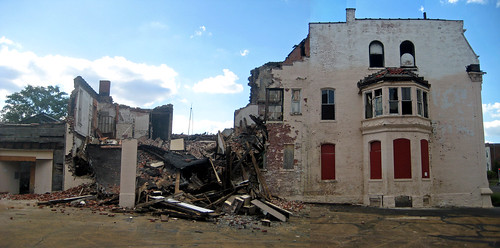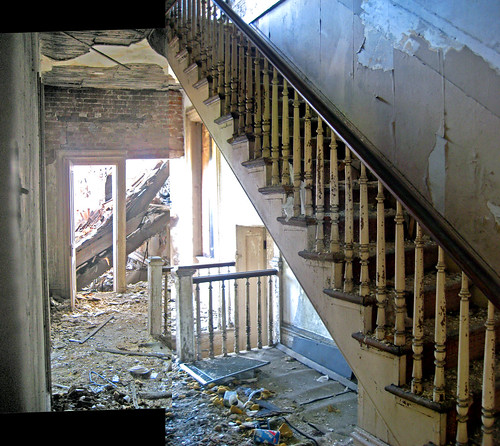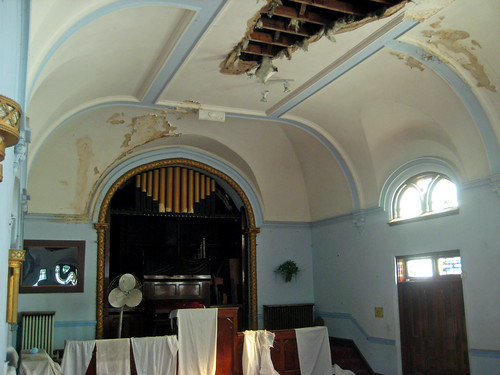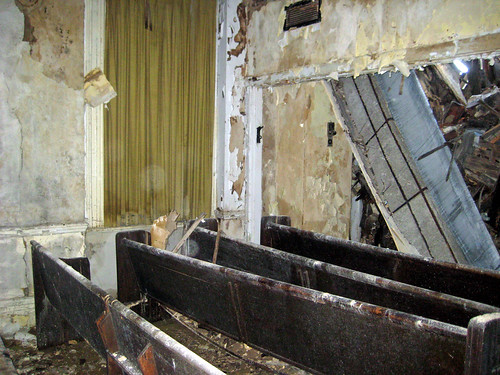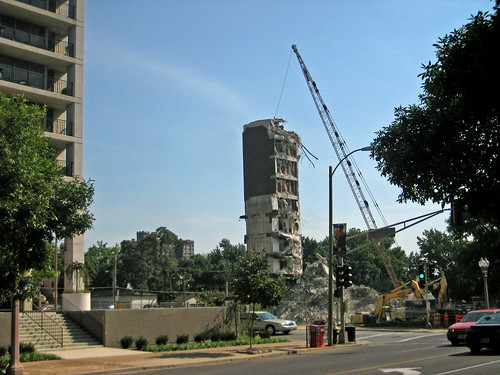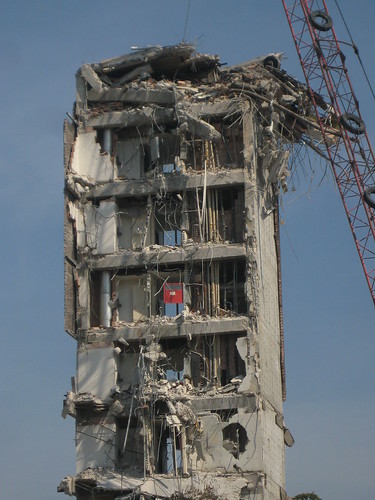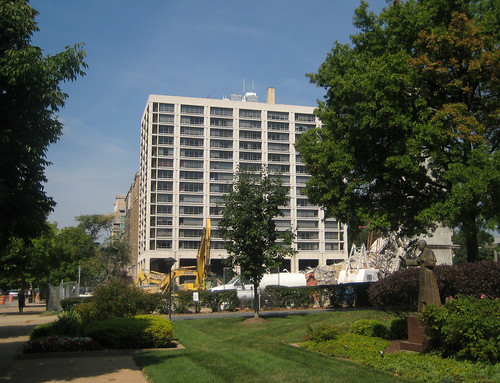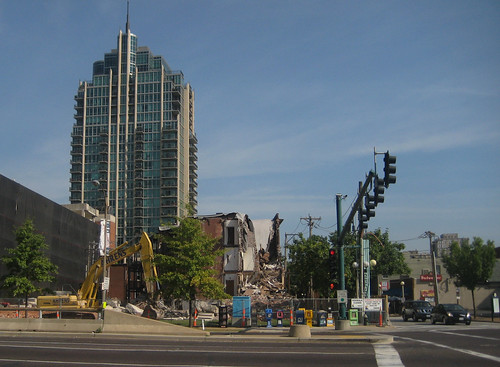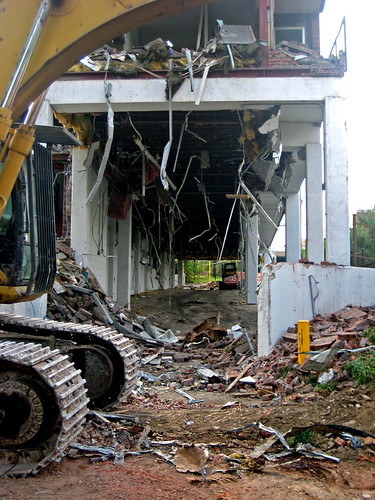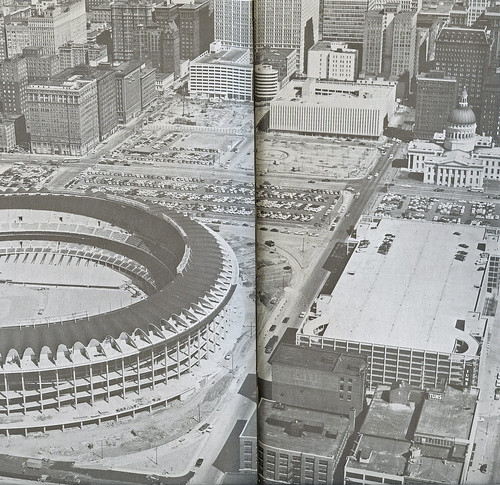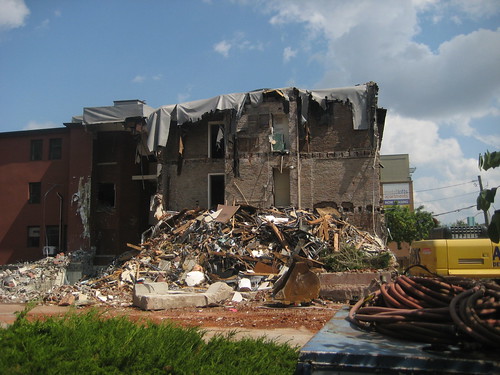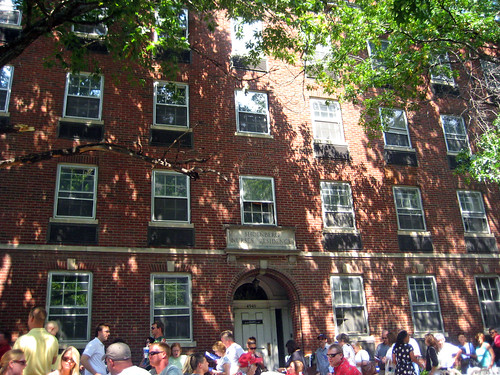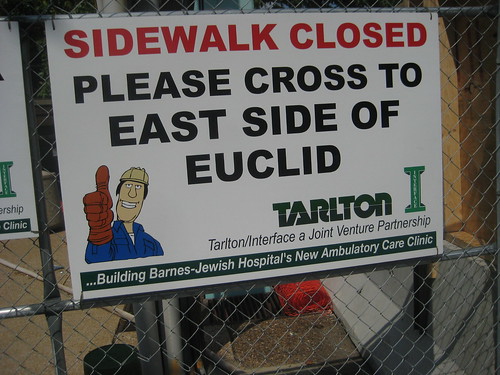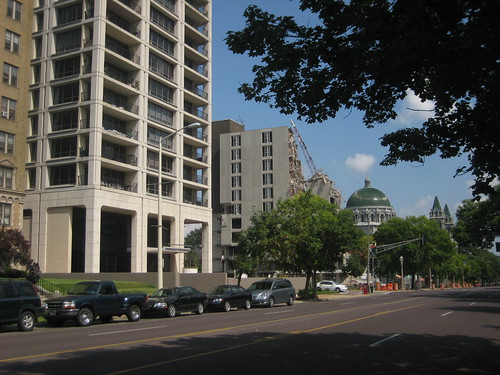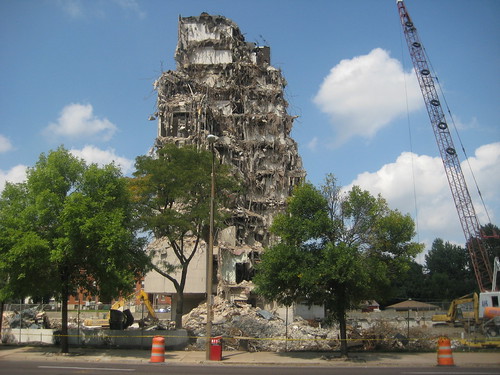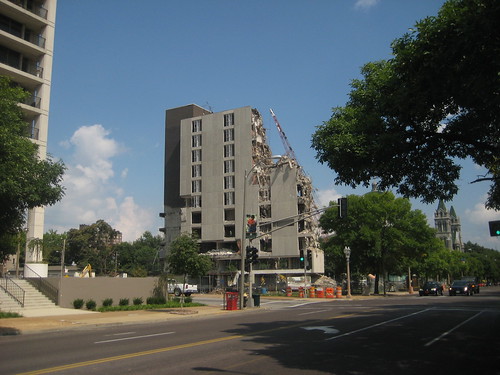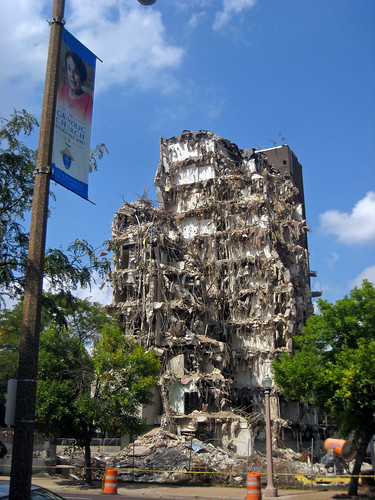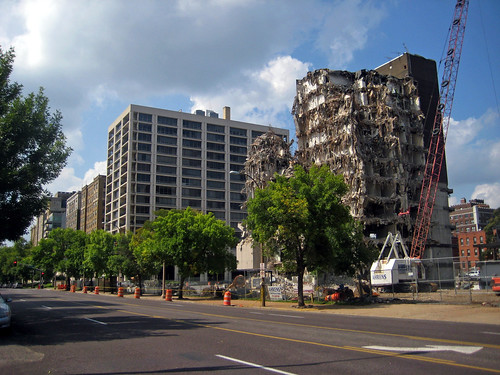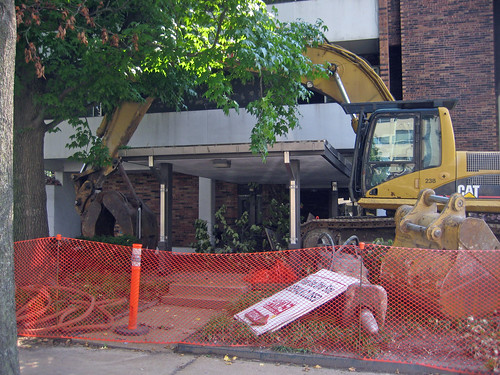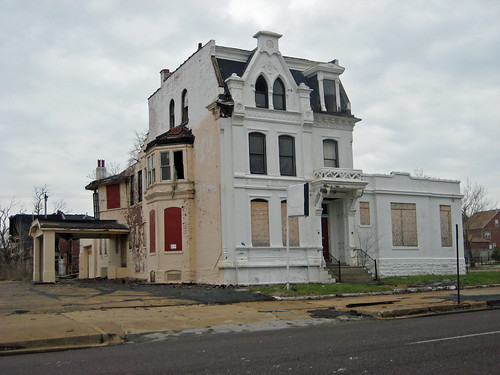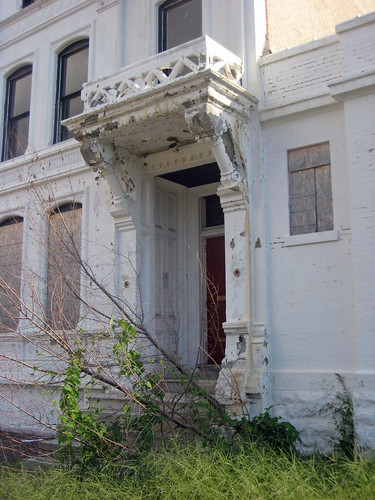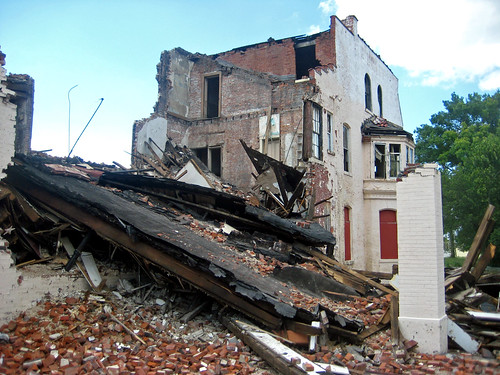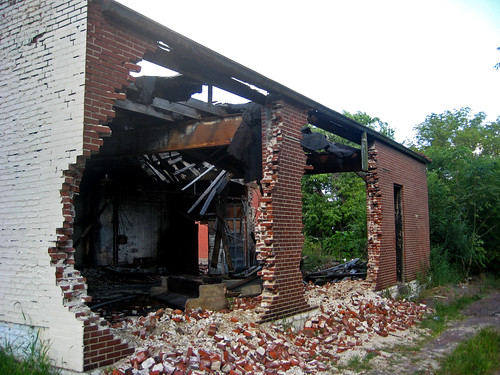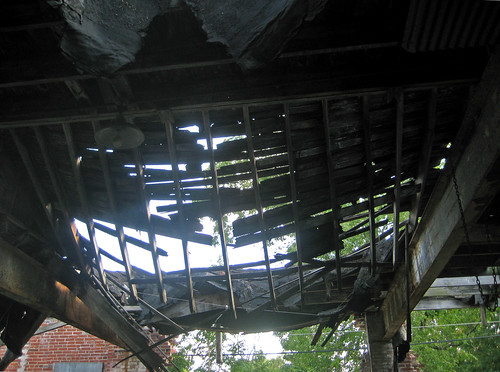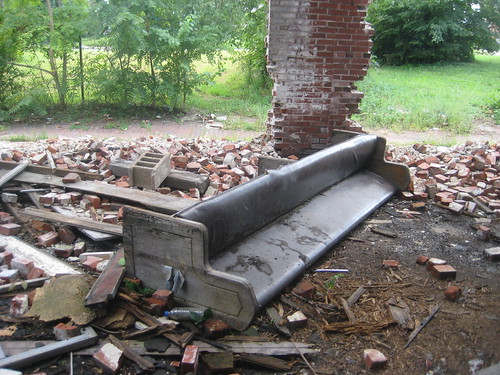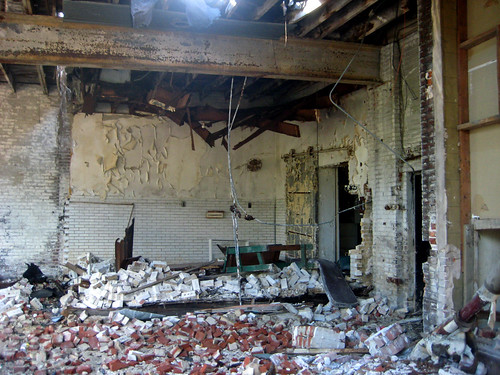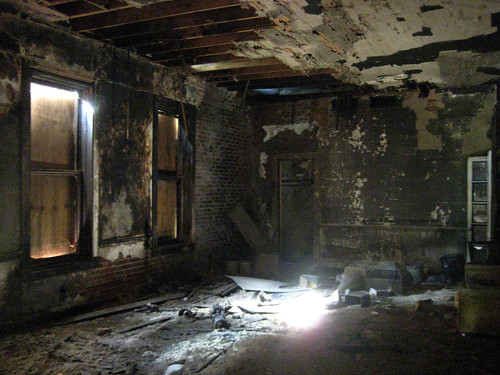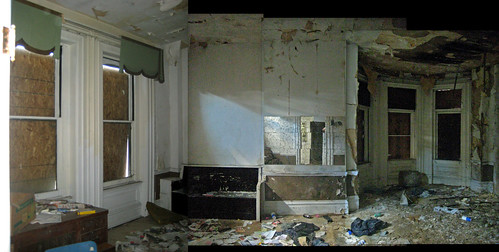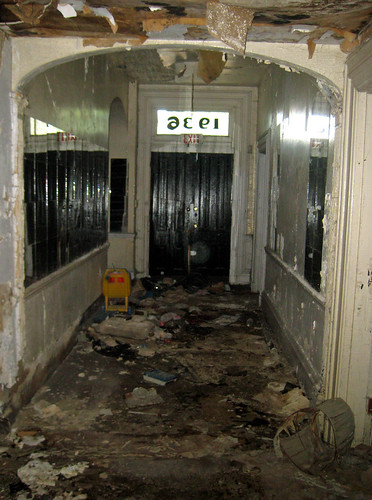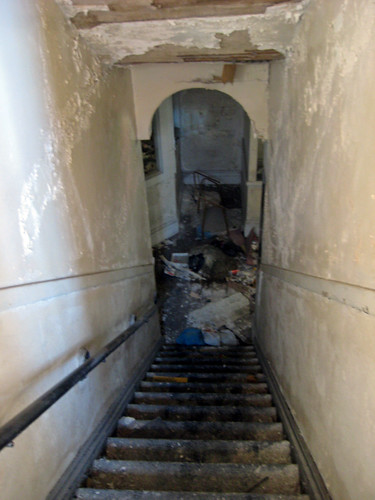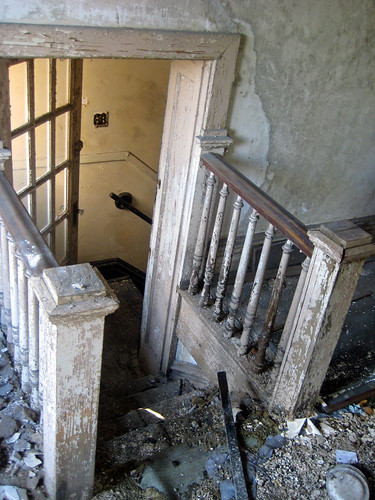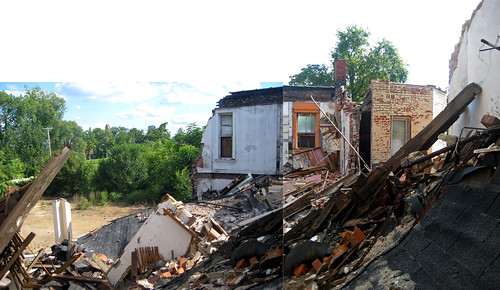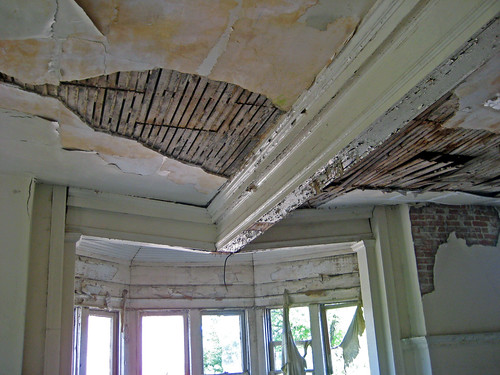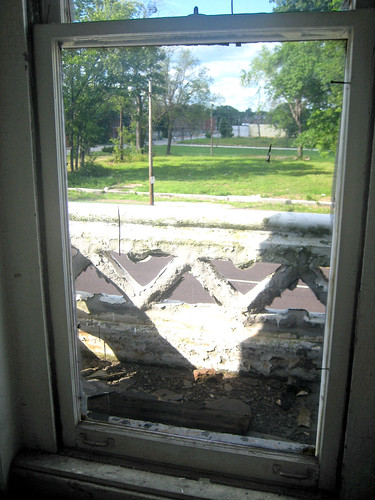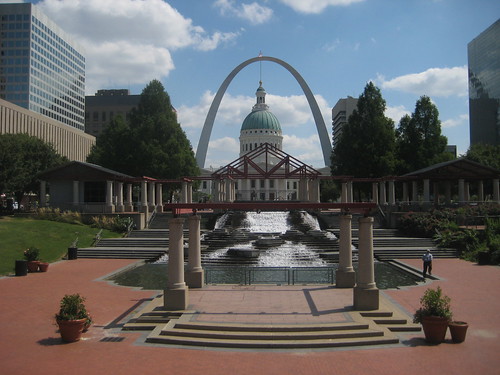
Recently HOK unveiled a proposed design to replace Kiener Plaza and the Morton D. May Amphitheater. The question is though: is this really necessary? Do we really need to completely re-design our public spaces every few decades? Kiener Plaza which was originally bounded by 6th, Broadway, Market and Chestnut was dedicated in 1966, the same year as the Gateway Arch, so admittedly this block is now 43 years old, but the Morton D. May Amphitheater was dedicated in 1987, a mere 22 years ago.
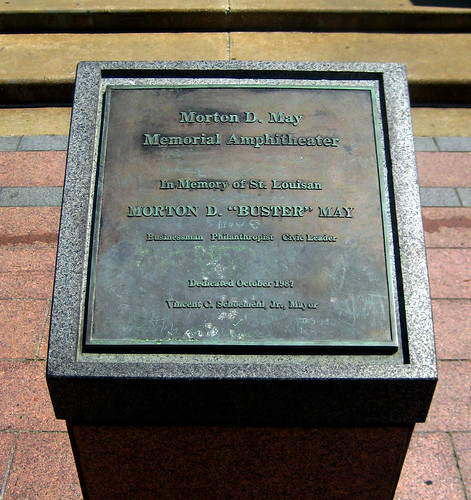
Morton D. May Amphitheater dedication plaque from 1987
While some might claim that the Kiener Plaza and Morton D. May Amphitheater look dated, we say lets be careful about using such subjective terms and even more cautious about replacing “dated” with the architectural pastiche of the day. While both designs are elegant in their own way, the current design of the amphitheater and the adjoining plaza has a greater chance of enduring over time. The architecture of the May Amphitheater was inspired by the Old Court House, which is part of the National Landmark Jefferson National Expansion Memorial. The proposed design however already looks dated to us. It’s design is reminiscent of images that have been published in architectural periodicals over the last few years. The desires for something new and flashy are symptomatic of the Bilbao Effect. Just like the fashion images from the pages of Vouge, these styles will only be trendy for a few seasons, if that. The current designs are more formal, tying into the Old Courthouse and Arch better, and are more likely to endure over time.
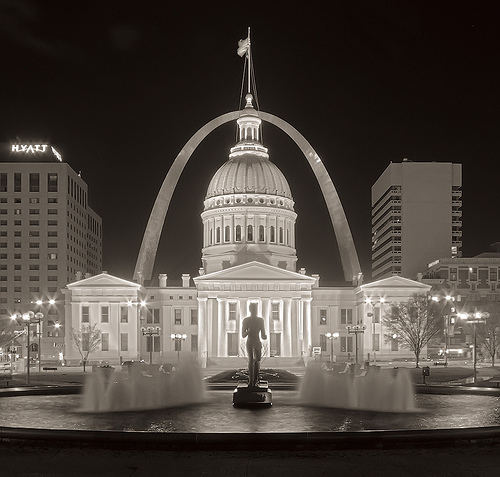
The formal relationship of Kiener Plaza, the Old Court House and
the Gateway Arch are well captured by this image by Mark Abeln
From a functional standpoint, the May Amphitheater still serves many purposes well on a daily basis. Lunch crowds from nearby Downtown office buildings gather daily to enjoy a bite to eat, catch a few rays of sunshine, read a book or simply to people watch. At Kiener Plaza, the benches that surround The Runner are rarely empty. This is an even better place to people watch due to the number of people who criss-cross the plaza on the way to another destination. For sports rallies and other special occasions, the current May Amphitheater functions very well. The proposed design does not appear to have much slope up from the stage area and would likely not have great sight lines.


Macy’s Festival of Lights – 2008. Photo from Partnership for Downtown St. Louis website.
The current design of the two blocks offers both intimacy and a large open space for events. The proposed design has a grand feel with an open expanse, but lacks intimacy. This is good for planned events, but it would require those large crowds to feel inviting. In the present Kiener Plaza and May Amphitheater, a person can feel comfortable even if they are the only one there. The current design offers multiple options for shelter, and better connectivity to all sides and corners of the surrounding blocks. The new design doesn't offer much shelter (and very few trees) and only seems to offer good connections along a NW-SE axis.

The present and proposed designs of the two blocks.
Then of course there is the cost. The budget for Old Post Office Plaza was $8.8 million for the 30,000 square foot area, or about $160.00 per square foot. Construction cost for nearby City Garden was $30 million for the 2.9 acres on two City blocks, or about $174.00 per square foot. City Garden is about the same size as the Kiener Plaza – May Amphitheater blocks.. Should we spend $30 million to completely replace what we have? No. Spend this on some of the blocks farther west that could really use some attention.
Do the existing spaces need some re-furbishing and enhancements? Yes. At the May Amphitheater, the asphalt perimeter paths, likely a last minute value engineering decision, should be replaced with a more appropriate paving, new access paths should be installed where landscaping gets regularly trampled, and new shade tolerant ground cover should be planted under the existing tree canopy. At the floor of the amphitheater and terraces to the south, adding movable umbrella tables would provide an additional shaded seating. The information center building should be re-designed to be more open with largely glass exterior walls. A companion building could be built to the south to house the nearby hot dog and concessions stand.

Asphalt paths and lawn areas around the amphitheater need to be addressed. The trees though, which provide pleasant shade and an intimate setting should remain.
At Kiener Plaza, concrete paving should be patched or replaced with matching where necessary, more benches should be added around the fountain, cobblestone edging and the cobblestone ring around the fountain need refurbishment. The lawn areas east of the fountain do seem to lack definition and could use something to add interest and encourage more use of the spaces. Something as simple as adding large topiaries could break up the lawns into more intimate spaces that are more likely to be used.
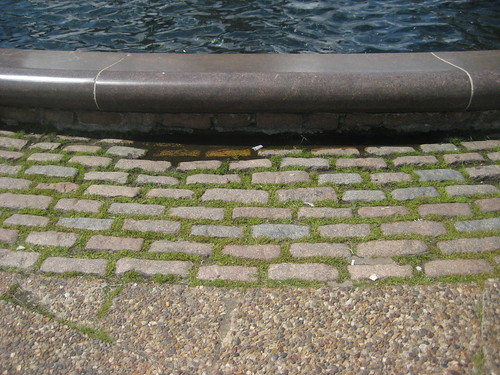
Cobblestones around The Runner should be re-worked.

People enjoying the intimate lawn spaces in front of the Naturhistorisches Museum in Vienna

One of the worst things about these two blocks is the view of the Kiener garages to the north with all the garage entrances along the street. Neither design is at fault for this drawback. At the May Amphitheater, at least the current design shields the majority of the view of with a row of trees. At Kiener Plaza, where more of the east garage is visible, simply stretching a metal mesh with an integral LED array could turn the garage facade into a giant video screen which could be programmed with regularly scheduled movie screenings and video art displays.
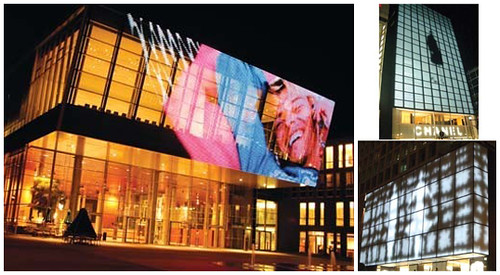
A few examples of LED mesh video arrays used on building facades
By spending a few million dollars on needed renovations and selective enhancements, Kiener Plaza and the Morton D. May Amphitheater could live up to their premier location. Throwing away everything in these two blocks for wholesale replacement would be extremely wasteful. The only advantages we can see with the proposed new design is that it's new and shiny, bold and flashy. These qualities wear off quickly.
 Two and a half years after demolition of the Stix Baer & Fuller department store and adjoining River Roads Mall buildings, much of the site has returned to nature, at least for now. Pyramid Companies had plans to redevelop the site mostly with single family homes, but with the collapse of the market for new homes and Pyramid, the land continues to sit vacant.
Two and a half years after demolition of the Stix Baer & Fuller department store and adjoining River Roads Mall buildings, much of the site has returned to nature, at least for now. Pyramid Companies had plans to redevelop the site mostly with single family homes, but with the collapse of the market for new homes and Pyramid, the land continues to sit vacant. Beyond the new prairie to the left is a row of new houses facing Cozens that were completed by Pyramid Companies. At center is an abandoned former Boatman's Bank and to the right peeking out from behind the hillside, the roof of an senior apartment building off Halls Ferry, also completed by Pyramid.
Beyond the new prairie to the left is a row of new houses facing Cozens that were completed by Pyramid Companies. At center is an abandoned former Boatman's Bank and to the right peeking out from behind the hillside, the roof of an senior apartment building off Halls Ferry, also completed by Pyramid. 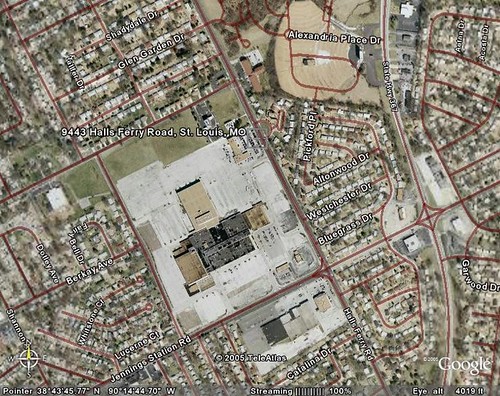 A 2005 aerial show the site at Halls Ferry and Jennings Station Road mostly covered with asphalt and the River Roads Mall buildings. Ironically, a small section of grass along Cozens in this view is one the few areas that was re-developed. A large pile of rubble also sits south of where Stix Bear and Fuller was located.
A 2005 aerial show the site at Halls Ferry and Jennings Station Road mostly covered with asphalt and the River Roads Mall buildings. Ironically, a small section of grass along Cozens in this view is one the few areas that was re-developed. A large pile of rubble also sits south of where Stix Bear and Fuller was located. The last of the quilt-like wallpaper of terra cotta which covered SBF's east facade as it appeared in April 2007 during the mall's demolition. The work was one of the largest installations of Modern terra cotta in the region. For more photos of the demolition, check out my Flickr set. Ecology of Absence and Built St. Louis both have great pre-demolition photos.
The last of the quilt-like wallpaper of terra cotta which covered SBF's east facade as it appeared in April 2007 during the mall's demolition. The work was one of the largest installations of Modern terra cotta in the region. For more photos of the demolition, check out my Flickr set. Ecology of Absence and Built St. Louis both have great pre-demolition photos.


